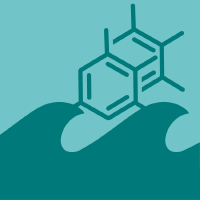Topic Menu
► Topic MenuTopic Editors



Marine Microbiology: Resources, Ecology, and Biogeochemistry
Topic Information
Dear Colleagues,
The oceans harbor a tremendous diversity of marine microorganisms. Different microorganisms (including archaea, bacteria, micro-eukaryotes, and viruses) and their functional groups dominate various marine habitats and drive critical biogeochemical cycles. Environmental pressures and anthropogenic perturbations influence microbial community compositions and functioning. Microbial metabolic activities, in turn, alter marine environments, such as the development of hypoxia and acidification. This topic on “Marine Microbiology: Resources, Ecology, and Biogeochemistry” provides a platform to highlight new research and advances related to microbial products and technology, diversities, and environmental responses, as well as biogeochemical processes in marine systems.
Prof. Dr. Hongyue Dang
Dr. Wanpeng Wang
Dr. Dongdong Zhang
Dr. Xiaoli Zhang
Topic Editors
Keywords
- marine microorganisms
- microbial metabolic activities
- biogeochemical cycles
- microbial products
- marine systems
Participating Journals
| Journal Name | Impact Factor | CiteScore | Launched Year | First Decision (median) | APC |
|---|---|---|---|---|---|

Biology
|
3.6 | 5.7 | 2012 | 16.1 Days | CHF 2700 |

Journal of Marine Science and Engineering
|
2.7 | 4.4 | 2013 | 16.9 Days | CHF 2600 |

Marine Drugs
|
4.9 | 9.6 | 2003 | 12.9 Days | CHF 2900 |

Microbiology Research
|
2.1 | 1.9 | 2010 | 16.7 Days | CHF 1600 |

MDPI Topics is cooperating with Preprints.org and has built a direct connection between MDPI journals and Preprints.org. Authors are encouraged to enjoy the benefits by posting a preprint at Preprints.org prior to publication:
- Immediately share your ideas ahead of publication and establish your research priority;
- Protect your idea from being stolen with this time-stamped preprint article;
- Enhance the exposure and impact of your research;
- Receive feedback from your peers in advance;
- Have it indexed in Web of Science (Preprint Citation Index), Google Scholar, Crossref, SHARE, PrePubMed, Scilit and Europe PMC.


